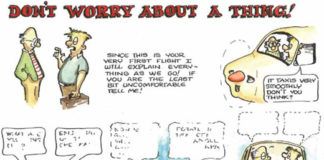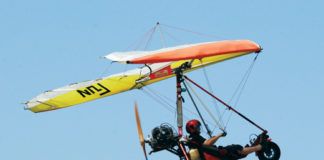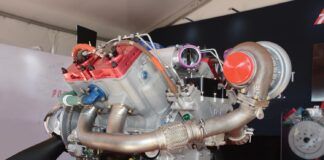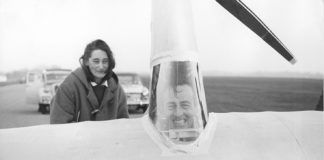
Antennas Up!
I have enjoyed following To Launch a Light Sport, by Bob Fritz. His recent effort discussed a couple of common problems dealing with poor reception, weak transmissions, and squealing in the headsets. While antennas on all-metal aircraft usually present few problems, antennas on fabric or composites can be difficult to engineer. Most all-metal aircraft inherently shield transmission energy from communication wiring to include headsets. Not so with fabric or composite aircraft.
Installation of stick type antennas usually requires a groundplane. This is an electrically conductive surface with a radius approximately equal to the length of the antenna. On fabric or composites it may be necessary to add a metal groundplane. There are other types of antennas that do not require groundplanes, but they are much more difficult to design and engineer.
The goal is to have clear communications at reasonable distances. The antenna and its placement determine the reception/transmission pattern. This problem can best be resolved by checking placements on other aircraft and comparing.
James L. Havens (N352JH)
Prime Movers
Automobile engines are attractive because they burn cheap lead-free gasoline; get great mileage through ECU-controlled mixture and timing; they are efficient due to overhead cams, multiporting and modern pistons; they’re inexpensive due to economy of scale; and they are lightweight and cool efficiently when aluminum blocks are used.
Airplane engines are durable because they redline at about 2700 rpm and thus don’t need PSRUs; they have large displacements generating one half horsepower per cubic inch and are air cooled.
To get the best of both worlds, why not use a basic brand L or C engine block and crankshaft, and modernize it like a current auto engine-with electronic fuel injection and ignition, overhead cams and other modern features. Better yet, start with a clean sheet of paper and design an aluminum, air-cooled, 87-octane gas-burning, low-rpm engine incorporating knowledge we’ve gained in the past 50 years.
Barry Gloger
Were all for electronic controls on legacy engines, and so are Continental and Lycoming. Both are developing electronic engine management. In fact, Continental is on its second generation. One thing is clear, though: As long as you’re going to keep the engine speed down, you don’t need more than two valves per cylinder, and a central cam with pushrods is well within its comfort zone at 2700 rpm. Remember, too, that Honda floated a clean sheet design and pulled it for lack of a market.-Ed.
What Ails Us
The airport security mania you describe in Around the Patch in the June issue is a symptom of a larger problem. A significant portion of the American population no longer wants a free and open society; they don’t just tolerate the police-state security measures you describe, they embrace them. For these people, the perception of security is far more important that any abstract ideals of freedom and they equate control with security. They are frightened by the prospect of individuals going about their daily affairs anonymously and unmonitored.
I agree with you that, We need to fight these restrictions at all levels. But I will be damned if I know how. By the way, the LASP program offered the usual public comment opportunity, except that the computer system wouldn’t accept any comments. Don’t know why…
Jim Chaput
Hooray for Marc Cook! In his June 2009 editorial in KITPLANES, Marc has expressed out loud what many of us in the GA world are feeling and whispering about among our friends. TSA is taking a chainsaw to our constitutional rights. Not only in GA but in other areas as well. Most of us support the EAAs and AOPAs position on these matters, but like many I am tired of reading the pablum-laden, mealy mouthed language used to describe our situation and the potential for total destruction of GA in their politically correct and understated tones. And their seeming unwillingness to …get mad as hell and not take it anymore.
Marc said it loud and clear. Perhaps his words will make his readers and others-those who sit passively and glassy-eyed when others talk about the problems-get off their duffs and take some action to let TSA know that their plans for GA are unacceptable. The time to step up, folks, is now! I nominate Marc Cook as General Aviations spokesman and encourage him to take his tell-it-like-it-is position to the halls of Congress to get the TSA brought under control.
Dennis Douglas
Thanks for your comments, Dennis. But your humble editor would like to graciously decline the job offer. Besides, the last time he was in Washington, D.C., he nearly got thrown out of a pub.-Ed.
Department of Corrections
Reader Kevin Horton brought to light that the table accompanying Jim Weirs February 2009 column, Maintain thy Airspeed, was in error. The water heights for a given airspeed in the February article are in error by more than 25%. Perhaps some sort of glitch crept into a spreadsheet in this latest article, said Horton. We ran the question by Jim, who realized that there was an error in the conversion factors. The column labeled Airpseed MPH contains values correct for knots.-Ed.
Write to KITPLANES at [email protected]




